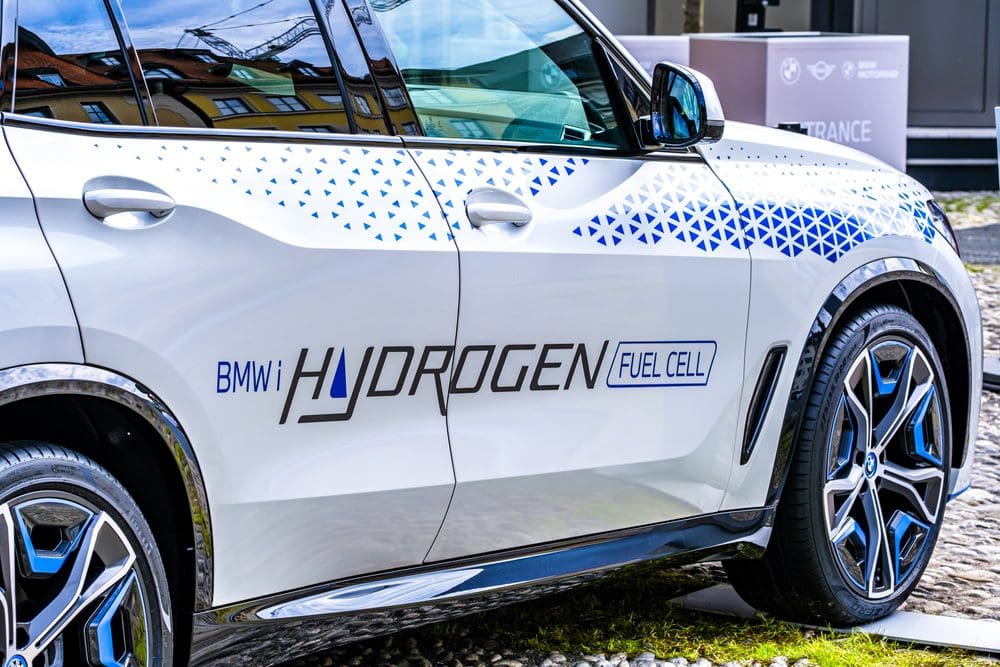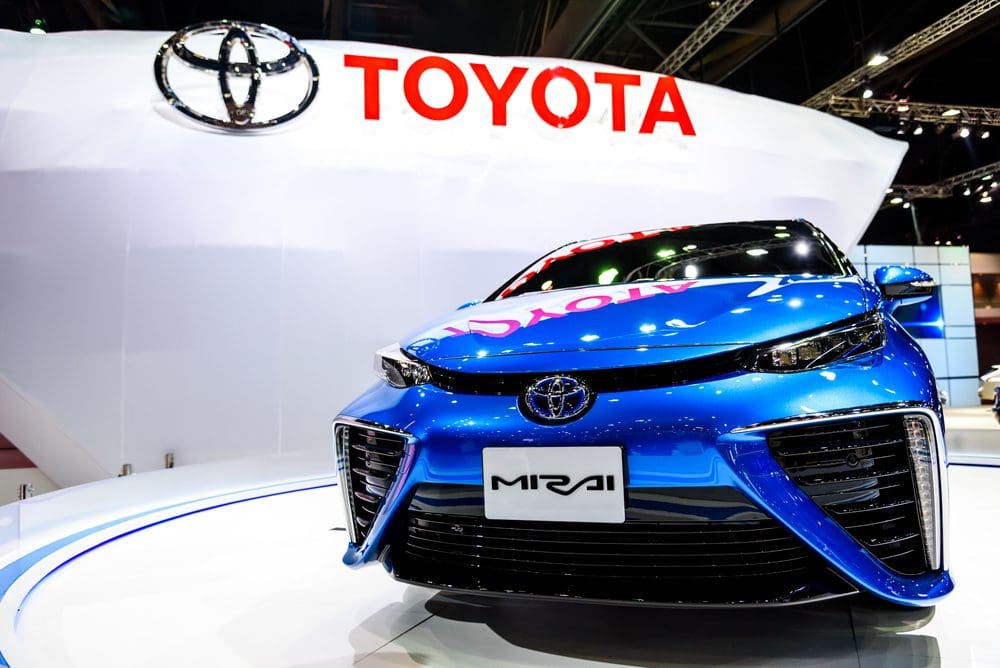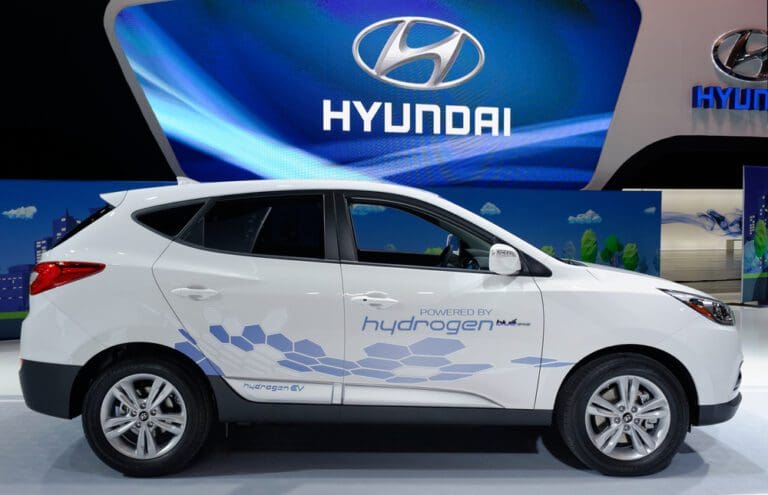Could hydrogen vehicles be a viable alternative to fuel cell electric vehicle hydrogen fuel cell?
Can hydrogen cars and trucks deal with the tailpipe emission issue?
Can hydrogen fuel cell be the future of vehicles’ driving range?
The move towards electric-powered vehicles appears unstoppable as we look to turn our back on polluting carbon emissions and diesel engines powered by fossil fuels.
Yet many say it is not electric cars but hydrogen powered cars and heavy goods vehicles which should be the fuel of the future.
As the most abundant element on the Earth, supplies are plentiful while the density of hydrogen means vehicles have at least comparable, if not better, range than their electric alternatives. Plus, the fuel cells they use will last the lifetime of the vehicle – unlike the limitations currently seen with electric vehicles’ lithium-ion batteries.
A hydrogen vehicle releases only water vapor, while ‘refilling’ at a fuelling station takes minutes more than the hours experienced by many electric drivers at charging stations.
Hydrogen Vehicles Market Size
It all sounds very positive, right? And the size of the market will excite investors too.

According to a report published earlier this year by Maximize Market, a global automotive and transportation market research firm, the hydrogen fuel cell vehicle market size was valued at $0.9 billion in 2021. It predicts it will grow to $17.88 billion by 2029.
Much of that growth will be in the long-haul HGV trade.
But to deliver on that growth, hydrogen vehicles need to tackle some challenges.
Hydrogen Vehicles Challenges
Firstly, while the world is rich in hydrogen the process in which it is converted into a useable energy source can often result in CO2 emissions as it is derived from natural gas using an energy-intensive process. This currently accounts for around 95% of the global hydrogen market.
However, there are considerable moves to creating a ‘green’ hydrogen – using the likes of seawater or utilising the power of wind turbines – thus delivering a fuel which releases no harmful pollutants in its processing.
But using techniques such as electrolysis on water – which separates H20 molecules to get the hydrogen – is energy intensive and, perhaps most significantly, expensive.
And then, of course, there’s the small matter of infrastructure – hydrogen-powered cars are out there – around 56,000 were sold by the end of 2022 (compared to 10.6 million electric vehicles) – but the facilities for refuelling are few and far between.
New hydrogen car trials show promise
In the US, for example, there are just 60 hydrogen fuelling stations point – 59 of which are in California. That compares to 130,000 electric points across the nation. Yet the manufacturers see its potential. Ford has patented an internal combustion engine which burns hydrogen, while Toyota has also trialled the technology with their new hydrogen car, Toyota Mirai.

There is much hope of long-distance trucks running on the fuel – seen as a key way to slash the emissions and reduce the carbon footprint they are currently responsible for.
The trick is obtaining sufficient quantities of ‘green’ hydrogen fuel to make the rival to electric a real contender.
And there are plenty of firms doing just that.
Innovation within the Industry
In 2021, US firm Monolith secured a $1 billion loan from the Department of Energy to progress its efforts.
It uses 100% renewable and carbon-free energy as part of a proprietary process to convert conventional and renewable natural gas to carbon black and hydrogen in an ‘environmentally advantaged’ manner.
Nikola has seen more than $3 billion invested. It’s fuel cell membrane electrode assembly (MEA) research is aimed at developing an architecture that could satisfy the power output needs and durability requirements of heavy-duty applications, such as the operations of the company’s long-haul vehicles. Its first hydrogen-powered truck, with a range of 500 miles, is due to hit the US roads later this year.
In Canada, Hydrolux is investing heavily. It explains: “Our first objective is to fuel warehouses that wish to transition to hydrogen powered forklifts.
“In the near future, we also aim to offer our services for trucks, buses and car fleets. Pairing our AI with a decentralised production model allows us to offer a fuel that will save our customers money, increase productivity and have a smaller impact on the planet.”
Formed in 2019, it has already built hydrogen fuel points in its homeland for long-distance vehicles.
US-based start-up Equatic recently secured a further $1 million in funding to create an electrolytic approach that removes CO2 equivalents from the ocean allowing the ocean to remove more it from the atmosphere.
By coupling carbon dioxide removal and generation of hydrogen gas as a green fuel it achieves two objectives essential for a decarbonised economy.
US firm Ohmium was founded in 2019 – earlier this year it secured $250 million in its latest round of funding.
It explains: “The transportation sector is a significant contributor to global CO2 emissions. In the form of fuel-by-fuel cells or combustion engines, hydrogen can be used as a sustainable alternative to gasoline or diesel.
“Green hydrogen – produced by 100% renewable energy – is an emissions-free option for both large and small transportation applications.”
As to who delivers, ultimately, an affordable form of hydrogen, on a scale which will satisfy thirsty customers, remains to be seen. However, with industry – and the transportation industry in particular – only too aware of the environmental impact it has, the embracing of genuinely green alternatives is a certainty.
The only question remains is whether a hydrogen fuel cell car or goods vehicle and electric will go hand-in-hand – like petrol and diesel does today – or if one will dominate
Conclusion
The potential for hydrogen fuel cell vehicles is clearly huge – particularly when it comes to long haul trucks. There the lighter load of hydrogen and its range could slash transportation costs while playing a significant role in dramatically reducing CO2 emissions. The question is whether it can be scaled up at pace and the necessary infrastructure is in place to make it viable.
Companies to Watch
Ohmium, Equatic, Hydrolux, Nikola, Monolith








